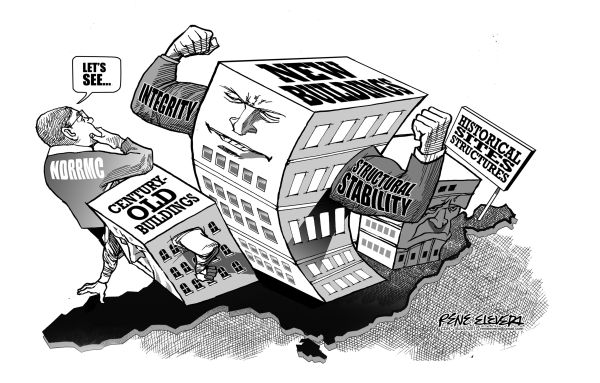
After the July 6 earthquake in Jaro town, Leyte province, Cebu residents would have to ev entually ask themselves: Are they ready to deal with an earthquake should, God forbid, it occur anywhere in the province?
If one were to ask the developers whose buildings dot the Metro Cebu skyline, the answer would be an unequivocal yes, as they reiterate that they have complied with amendments to the National Building Code, which include among other requirements that their structures should be able to withstand a 9-magnitude earthquake.
Since anyone who was living within the proximity of last July 6’s earthquake were rattled enough with a 6.5-magnitude temblor on the Richter scale, it is a small comfort to know about thei r reassurance though no one wouldn’t want to have their claims verified with another quake at this time or any time at all.
But we ask ourselves about the structural integrity or stability of the aging, decrepit buildings that are located at Cebu City’s downtown area particularly in Colon Street whose structures have been there well before the World War II.
Two years ago, the Cebu City government launched an assessment campaign to evaluate the structural stability of these aging buildings, and while the complete report has yet to be heard of by the public, we won’t be surprised if the general assessment turns out negative.
We also won’t be surprised if the Cebu City government’s present administration won’t do a single thing about it other than to warn nearby residents to avoid these structures like the plague lest they be crushed under the rubble.
A lot of these are buildings with some history in them, and since the past administration’s ambitious program to convert and revitalize downtown Cebu City into something of a cultural heritage site remained an empty dream — in fact the Cebu City Medical Center’s construction is a very long work in progress and something that will definitely be prioritized over these structures — we should expect nothing to be done about them at all.
Which is more than sad, really, since some of these structures were also found to have encroached on the mouths of rivers and posed a significant problem for flooding in the downtown area.
For now, aside from the city hospital, the Cebu City government may want to double-check on the structural stability of school buildings to see if they can withstand tremors strong enough to shake newer, more modern and stronger commercial buildings to the core.
Along with instilling awareness and a readiness to cope and deal with quakes and the resulting aftershocks, the structural stability of buildings and houses are of utmost importance.
Following the Surigao del Sur province quake last February and now the quake in Jaro town, Leyte province, Cebu must now be ready to deal and cope with the reality of tremors caused by Earth’s ever-shifting landscape.